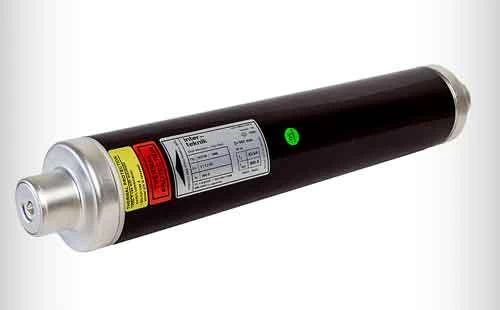Smart High Voltage Fuses

In the realm of electrical systems, the integration of smart technologies into high voltage fuses marks a significant advancement. These smart fuses embody a new generation of protection devices, equipped with capabilities for real-time monitoring, predictive maintenance, and automated system response. This article delves into how smart technologies are revolutionizing high voltage fuses, highlighting their benefits functionalities,considerations and potential challenges.
The Rise of Smart Fuses
Smart fuses integrate sensors, microprocessors, and communication modules within the traditional HV fuse design. These enhancements enable features like:
Real-Time Monitoring: Smart fuses can continuously monitor various parameters like current flow, temperature, and voltage within the circuit. This real-time data provides valuable insights into the health of the electrical system and potential fault conditions.
Predictive Maintenance: By analyzing the collected data, smart fuses can predict potential issues like fuse element degradation or impending overload conditions. This enables proactive maintenance, preventing unexpected outages and improving system reliability.
Automated System Response: Smart fuses can be integrated with control systems to trigger automated responses to fault events. For example, a smart fuse detecting a short circuit could initiate the disconnection of specific sections of the circuit, minimizing equipment damage and downtime.
Improved Fault Diagnostics: Smart fuses can provide detailed information about the nature of a fault event. This data can be crucial for identifying the root cause of the fault and facilitating faster repairs.
Communication Technologies for Smart Fuses
Several communication technologies are being explored for data transmission between smart fuses and control systems:
Wireless Communication Protocols: Protocols like Wi-Fi, cellular networks, or dedicated industrial wireless protocols can enable remote monitoring and control of smart fuses.
Power Line Communication (PLC): This technology utilizes the existing power lines for data transmission, eliminating the need for additional cabling infrastructure.
Fiber Optic Communication: For high-bandwidth applications, fiber optic communication offers reliable and secure data transmission over long distances.
The choice of communication technology depends on factors like cost, reliability, security, and the specific application requirements.
Benefits and Potential of Smart Fuses
The integration of intelligence into HV fuses offers several potential advantages:
Enhanced System Reliability: Real-time monitoring and predictive maintenance capabilities can significantly improve the overall reliability of the electrical system by identifying and addressing potential issues before they escalate into major faults.
Reduced Downtime: Automated fault response and improved diagnostics can minimize downtime associated with fault events, leading to increased operational efficiency.
Improved Safety: Early detection of potential problems can help prevent catastrophic equipment failures and enhance overall safety within the electrical system.
Optimized Maintenance Strategies: The data collected by smart fuses can be used to optimize maintenance schedules, focusing resources on components most likely to require attention.
Data-Driven Decision Making: The insights obtained from smart fuses can inform decisions regarding grid modernization and future infrastructure investments.
Challenges and Considerations
Technical Complexity and Cost
The integration of smart technologies into high voltage fuses introduces additional complexity and cost. Developing, implementing, and maintaining these advanced systems require significant investment and technical expertise. The initial costs and the need for specialized skills can be barriers to widespread adoption.
Cybersecurity and Reliability
As with any smart technology, cybersecurity is a critical concern. The interconnected nature of smart fuses increases the risk of cyber attacks, which could compromise the safety and reliability of the electrical system. Ensuring robust security measures and reliable operation in the face of potential cyber threats is paramount.
Smart high voltage fuses represent a transformative development in electrical protection, offering advanced capabilities like real-time monitoring, predictive maintenance, and automated system response. These technologies enhance the reliability, efficiency, and safety of electrical systems, providing significant benefits to operators and users. However, the adoption of smart fuses also brings challenges, including increased complexity, cost, and cybersecurity risks. Addressing these challenges is essential to fully realize the potential of smart high voltage fuses in modern electrical systems.




